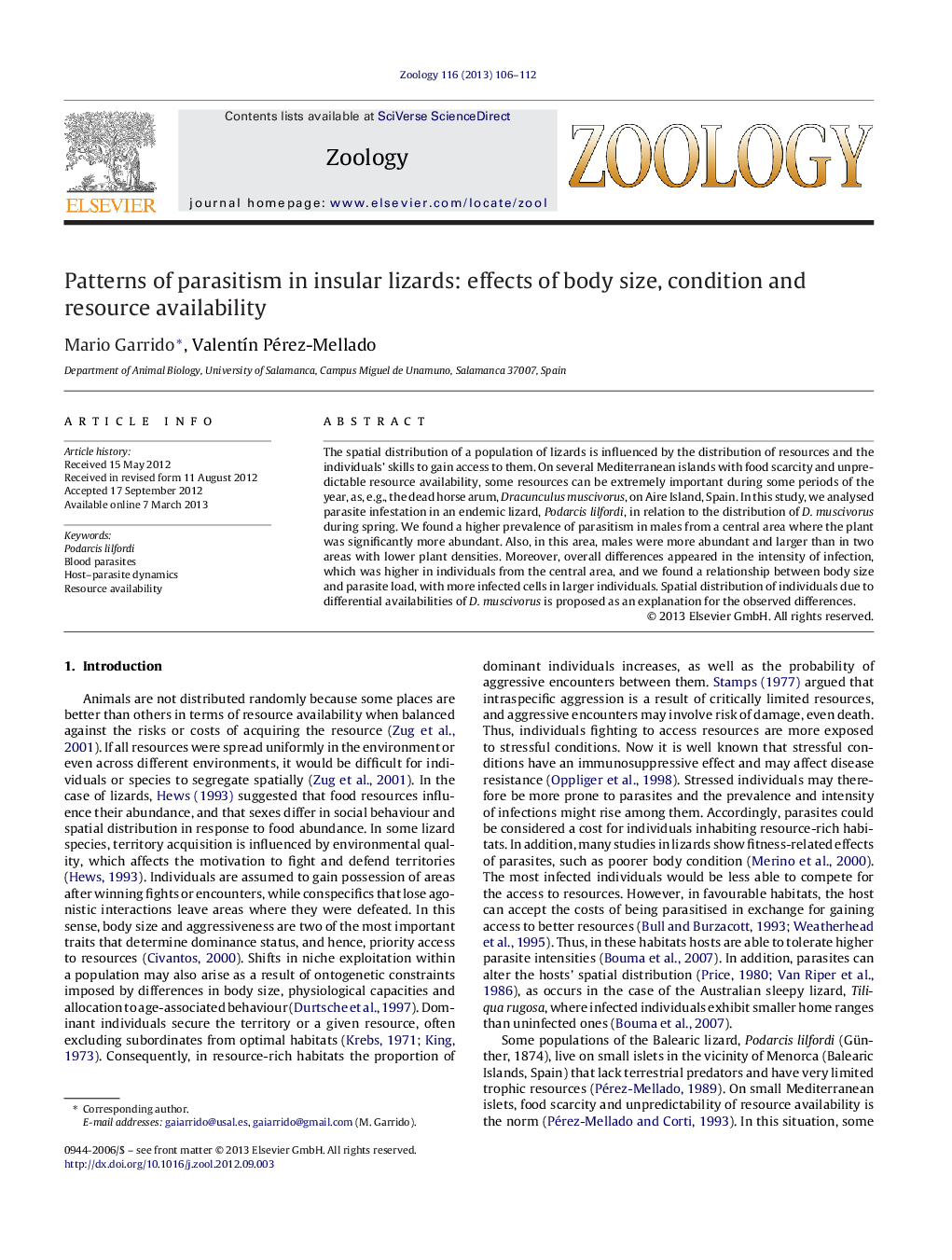| کد مقاله | کد نشریه | سال انتشار | مقاله انگلیسی | نسخه تمام متن |
|---|---|---|---|---|
| 2791212 | 1154856 | 2013 | 7 صفحه PDF | دانلود رایگان |

The spatial distribution of a population of lizards is influenced by the distribution of resources and the individuals’ skills to gain access to them. On several Mediterranean islands with food scarcity and unpredictable resource availability, some resources can be extremely important during some periods of the year, as, e.g., the dead horse arum, Dracunculus muscivorus, on Aire Island, Spain. In this study, we analysed parasite infestation in an endemic lizard, Podarcis lilfordi, in relation to the distribution of D. muscivorus during spring. We found a higher prevalence of parasitism in males from a central area where the plant was significantly more abundant. Also, in this area, males were more abundant and larger than in two areas with lower plant densities. Moreover, overall differences appeared in the intensity of infection, which was higher in individuals from the central area, and we found a relationship between body size and parasite load, with more infected cells in larger individuals. Spatial distribution of individuals due to differential availabilities of D. muscivorus is proposed as an explanation for the observed differences.
Journal: Zoology - Volume 116, Issue 2, April 2013, Pages 106–112